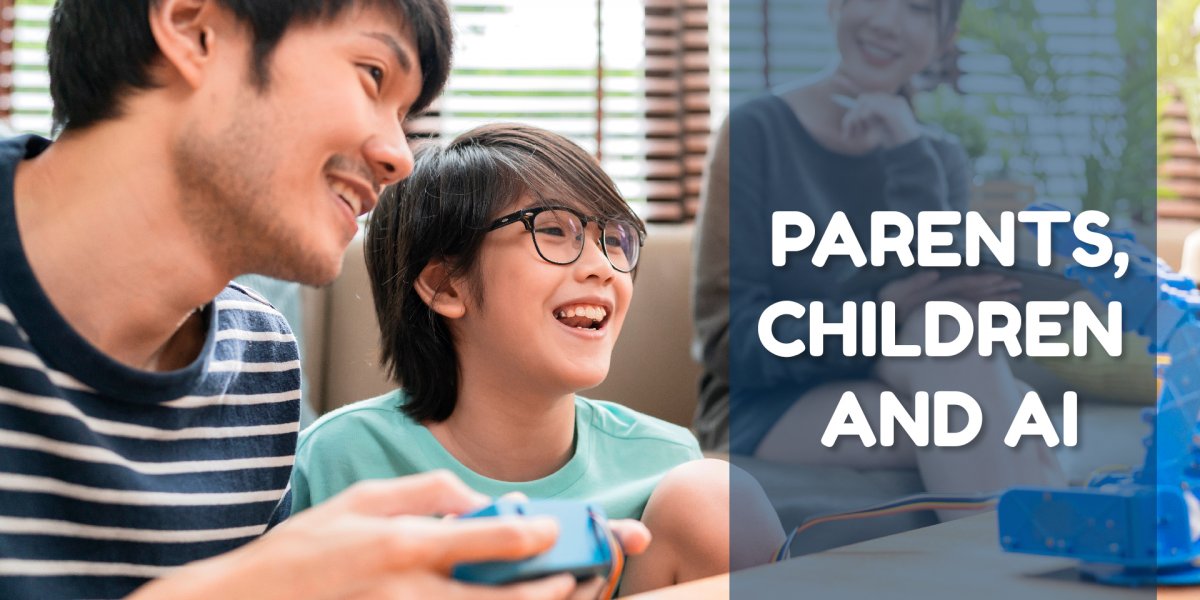The rise of emerging technologies has resulted in a complete transformation of our lives. Today’s youngsters belong to the AI generation. They belong to a world of emerging technologies powered by Artificial Intelligence (AI), Augmented Reality (AR), and Virtual Reality (VR). The applications of AI in the life of youngsters can be seen everywhere. The young generation is constantly interacting with AI. From Amazon Alexa which they converse with to YouTube recommendations, the impact of AI can be witnessed everywhere.
The rights and well-being of children needs to be protected
- The potential of AI for the education and health of children is huge.
- However, with the increasing applications of AI, protecting children in today’s AI age is crucial.
- Just like children are protected in the real (physical) world, their safety, security, and privacy should be protected in the digital and AI world as well.
- When designing and developing AI algorithms and systems, it is important for stakeholders and decision-makers to prioritize the well-being and safety of children.
Key statistics about the applications of AI and its potential as well
- By 2023, it is expected that more than 275 million AI-powered voice assistants will be installed in homes globally.
- More than 40% of the toys that children play with, are already connected to the internet.
- By 2030, children would be learning from robot teachers 10 times faster than what they are today.
- The AI in education global market is expected to reach USD 3.68 billion by 2023, and USD 21.52 billion by 2028.
Unleashing the real power and potential of AI
- The applications of AI in education not only transform the way children learn, but also their behavior, preferences, and perceptions.
- AI powered tools and technologies are being used in the classroom. They are creating an impact on the education sector, and have transformed a traditional classroom into a fun, interactive, and digital classroom for children.
- From personalized learning solutions for children and keeping a track on them to detecting weaknesses, and helping teachers to fill the gaps that exist in education, there are many applications of AI in the education industry.
- AI is definitely transforming the education system for the better.
- Knewton is an AI-powered learning software that is capable of identifying gaps in knowledge for a particular child. Based on the gaps seen, it can specifically design customized content aligned with the child’s needs.
- The Presentation Translator by Microsoft supports more than 60 text languages and directly subtitles in a particular language as the presentation is being delivered. This AI powered software can help children with hearing impairment.
Creating a safe digital space for children is a challenge
- The numerous applications of AI also present some challenges, especially for children.
- A major challenge that lies in the applications of AI for children is to create a safe and secure environment for them.
- Children are quite vulnerable and susceptible in the AI-powered digital world.
- The safety, privacy, and security of children is of prime importance to everyone.
- When interacting with smart toys, bots, and virtual assistants, there is a lot of sensitive information about children being captured.
- Some AI toys with facial recognition pose a risk to biometric data as well.
- If such sensitive data reaches the wrong hands, it can put the safety of children at risk.
- With data breaches and thefts being quite common, there are chances and risks of photos, videos, and recording of children being leaked.
Moving towards a child-centric AI world
- The physical world has certain standards, norms, and guidelines for children. For example, not to talk with strangers, or children below a certain age need to be accompanied by a parent.
- On similar lines, certain policies and protocols can be made so that the AI-powered virtual world can be supervised for children as well.
- A child-centric AI world that focuses on the wellbeing of children is essential to minimize the risks to the safety and privacy of children.
- UNICEF has been actively involved in raising a voice towards the well-being of children in the AI world.
- UNICEF is working closely with the World Economic Forum to create a policy guidance on the use of AI for children. This is a part of UNICEF’s AI for Children program.
AI literacy is the need of the hour
Moving forward into the future, children who go to primary school will work in organizations at such positions and designation that have not been created till now. Technology is advancing with each passing day. Hence, AI literacy is a must for children. As a part of AI literacy, every school curriculum must incorporate STEM learning, coding, programming, and AI training. It is essential to build AI literacy and future skills in children to make them future ready.

